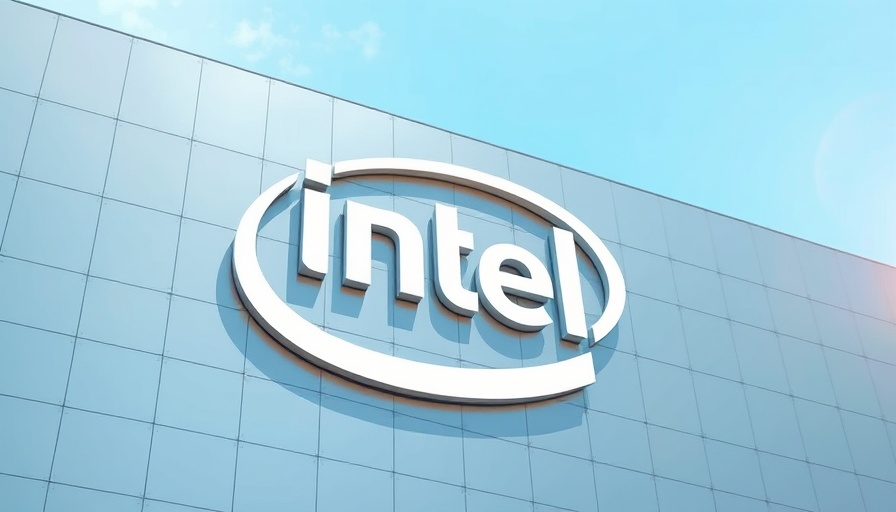
Intel’s New Direction: An Insight into Shareholder Decisions
Intel’s recent shareholder meeting illuminated both the challenges and strategies at play within one of America’s leading tech giants. As the company navigates through fiscal difficulties, the approval of an equity incentive plan and a substantial compensation package for CEO Lip-Bu Tan signals a pivotal moment for Intel. This decision comes at a time when Intel stocks have significantly dropped, necessitating fresh strategies for talent attraction and retention.
Understanding the Equity Incentive Plan
The approved measure to add to ‘share reserves’ focuses on enhancing employee benefits as part of a broader initiative to motivate Intel's workforce. The challenge here lies in reverse-engineering the culture that may have led to a massive drop in shares by 36% over the past year. With Tan's equity stake aimed at creating a direct correlation between performance and compensation, employees can now align their individual achievements with the company’s market outcomes, fostering a sense of ownership and loyalty.
Impact of CEO Compensation on Employee Sentiment
CEO compensation schemes, like the $42 million in stock awards earmarked for Tan, can often invoke mixed reactions among employees. On one hand, the promise of a profitable future linked to leadership performance may inspire confidence; on the other, it raises concerns about equitable pay structures, especially when coupled with workforce reductions that can accompany company restructuring. This underscores the importance of careful communication regarding compensation strategies to maintain employee engagement and satisfaction.
Addressing Shareholder Concerns: The Road Ahead
Despite the approval of key proposals, shareholders rejected three measures that could have realigned Intel's operations, particularly in relation to its operations in Israel and overall charitable giving. This tells us that shareholders are looking for broader accountability and transparency in operational decisions. With Tan at the helm, there’s a pressing need to reshape not just internal structures, but also external perceptions about Intel’s character as a corporate citizen.
Intel’s Strategic Business Restructuring
Tan's plan to flatten the leadership hierarchy and his focus on rebuilding the artificial intelligence (AI) segment is pivotal. By redefining job roles and streamlining communication, Tan aims to counteract what has been termed a costly and ineffective turnaround strategy by former CEO Pat Gelsinger. This approach not only optimizes human capital management but also embodies the trend of HR digital transformation in streamlining operations and enhancing productivity.
Leveraging Market Share in a Competitive Landscape
With Tan emphasizing the importance of leveraging Intel’s substantial share across the personal computer and data center markets, there’s scope for a revitalization of product offerings. Crafting competitive products and refining the AI strategy can reinvigorate Intel's reputation within a rapidly evolving tech ecosystem. Furthermore, workforce analytics and payroll systems will play a crucial role in ensuring that the right talent is aligned with strategic goals, promoting both employee satisfaction and operational efficiency.
Addressing Future Challenges and Opportunities
As Intel embarks on this transformative journey under Tan's leadership, several questions arise regarding potential future challenges. Adapting to market changes, embracing AI more actively, and ensuring agile responses in a competitive environment requires expert talent management strategies. Understanding and implementing effective employee retention strategies alongside a comprehensive HR policy development framework can establish a robust foundation for growth.
This juncture for Intel allows for reflection on the importance of engaging employees and fostering a culture that resonates with their aspirations. HR professionals and directors must remain vigilant in monitoring employee engagement metrics that signal workforce morale and satisfaction.
Conclusion: A Call to Re-evaluate Employee Engagement Strategies
For HR professionals assessing Intel’s strategic shifts, consider how you can apply similar principles in your organization. Tailoring compensation plans, utilizing HR software solutions, and focusing on employee benefits optimization can be key steps to not just survive, but thrive in changing markets. Engage with your workforce thoughtfully, ensuring each individual has a voice that supports a collective vision for success.
 Add Row
Add Row  Add
Add 




Write A Comment